This article is published as part of our #CultureIsNotCancelled campaign:
LA-born and based artist Martine Syms’ body of work comprises an intoxicating, dynamic montage that has positioned her as one of the most compelling voices of a new generation of artists. Having graduated from both the School of the Art Institute of Chicago and upstate New York’s Bard College, the self-described “conceptual entrepreneur” has created an oeuvre that spans performative lecture, written and printed material, video, sculpture, photography, and graphic and website design. Syms’ gallery-based work combines many of these elements at once – as do many of the commercial projects she has produced – while Dominica, the publishing imprint she founded in 2011, dedicated to exploring blackness in visual culture, produces essays, criticism and short stories by her fellow thinkers and peers. Her 360-degree output is indicative of a desire for inclusiveness, with each channel brought to life through her punchy and acerbic aesthetic language, designed to reach audiences of all kinds. To experience her works corporeally, though – say, through her 2016 exhibition Fact & Trouble at London’s ICA; Projects 106, her solo show at MoMA in 2017; or her contribution to the 2019 Whitney Biennial – is to be submerged in an operatic cacophony of both her references and her many talents. Having only started exhibiting four years ago, Syms has amassed a small but mighty roster of showcases in a remarkably short space of time.
The gallery space is the stage for Syms’ immersive, moving collages: photography is layered across walls, screens are embedded in purpose-built furniture, and chatty, meme-like typography dominates, plastered like neon banners that run wall to wall. Bright orange illuminated the room at the Whitney, while the colour purple – as in, Alice Walker’s – has occurred again and again, at MoMA, at the ICA and at Chicago’s Graham Foundation, too. Imagery from the walls – found photos, iPhone snaps, screenshots – winds its way onto the screens, spliced with scenes from 1990s American sitcoms, memes, MTV reality shows, GIFs, tweets, SMS conversations and Syms’ own live-action film footage, featuring actors and often herself in yet another splicing: that of autobiography and fiction. In Grand Calme, Syms’ 2018 show at her representing gallery Sadie Coles, in London, moving image broke from the screen and poured onto the floors and walls, her own CGI avatar (who could also be controlled via an augmented-reality app by viewers on their phones) was projected onto transparent panels, more resembling a floating hologram than anything we’re used to on our contemporary LED displays. The seats from which these screens were observed took on an extra presence here – stylised, woven-plastic chairs situated audience members apart, disconnected, scattered across the room and pointing in all directions, each consuming adaptations of the same image streams, isolated in their own bubble. For her Whitney installation, specific attention was paid to seating in a network of mesh benches.
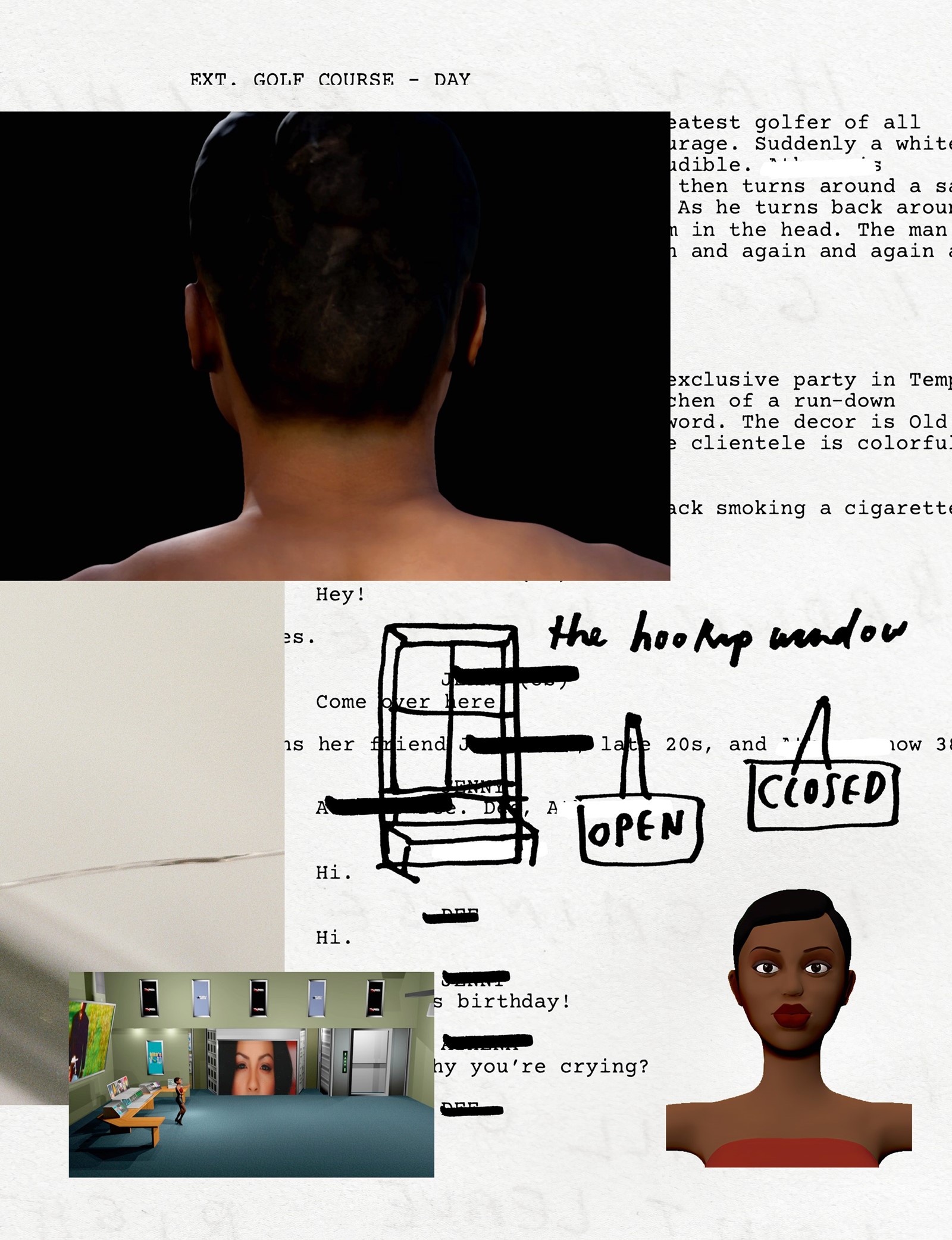
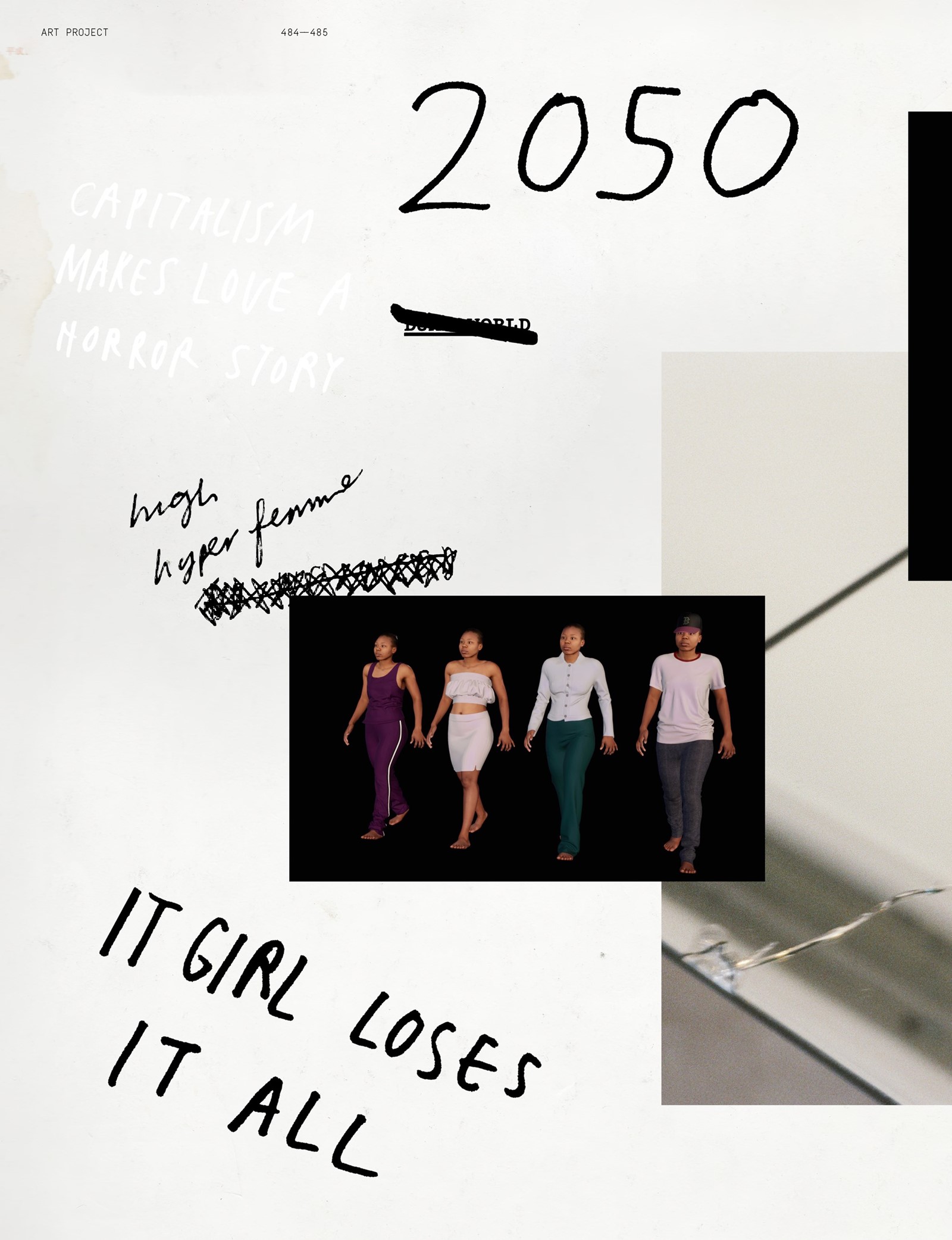
These means of observation are given such import because it is through these screens that we construct ourselves, argues Syms. Ideas of blackness and gender – daily politics – are built here, so too are pervasive stereotypes, and our modern-day customs and interactions. Consumption is the driver: of images, of words, of product. Syms’ hometown of LA is redolent of that – it’s the birthplace of cinema, punctuated with billboard screens, now with a population almost entirely and constantly plugged in, just a few hours’ drive from Silicon Valley. Engaging directly with the key platforms of her 31-year lifetime, Syms boldly fuses digital and analogue aesthetics in a mode befitting our scattered attention spans. She is as at home with YouTubers’ reaction videos (footage of people reacting to anything, from new pop videos to gross-out online content) as academia, responding to the works of critics such as Margo Jefferson and philosopher William James, or to poet Kevin Young’s analysis of African-American writers. It is no surprise, then, given this multilayered mode of attack, that in 2018 Syms received the second Future Fields Commission in Time-Based Media from Fondazione Sandretto Re Rebaudengo and the Philadelphia Museum of Art.
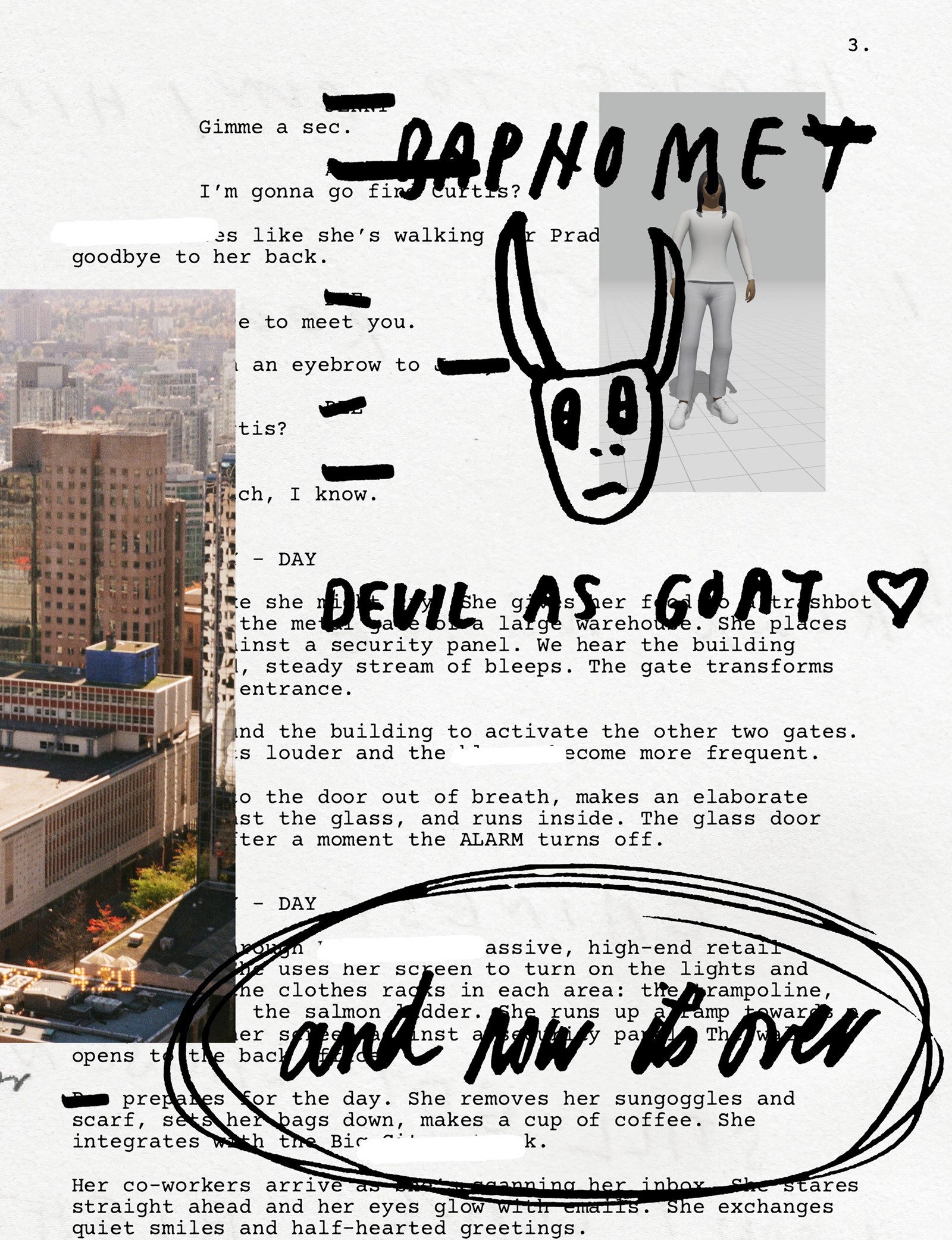
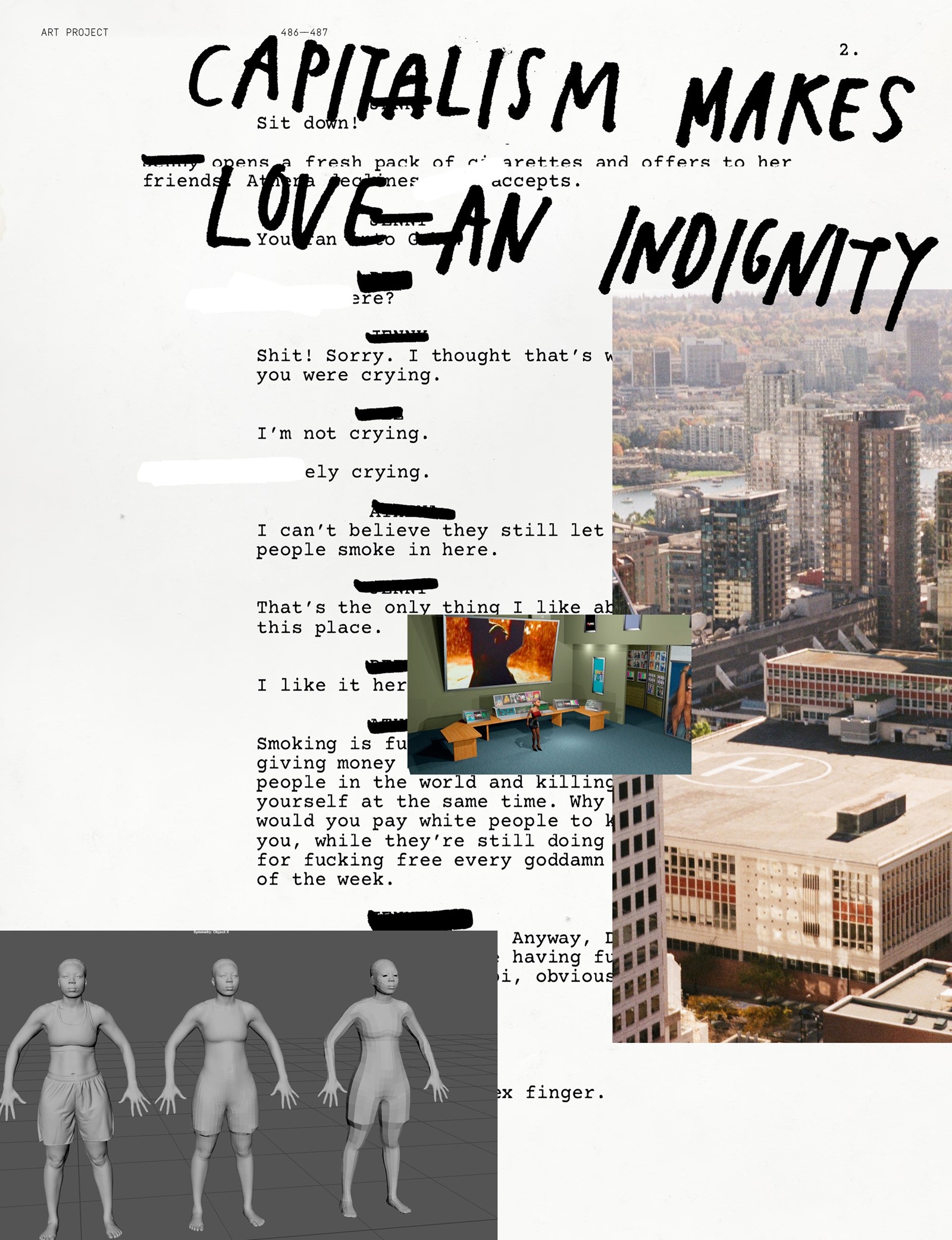
Opening first later in the year at the foundation’s exhibition space in Turin (unfortunately, the exhibition was postponed from April, due to the outbreak of Covid-19) then moving to the Philadelphia Museum of Art in 2021, Syms’ as-yet-unfinished, untitled work, will expand upon her now-well-trodden territories. Combining both live-action film and motion-capture CGI, Syms will employ an AI algorithm to determine the editing rhythms of footage streamed across multiple screens. Interactive elements will allow the audience to control parts of the narrative, simultaneously offering authorship to the viewer while pulling them into a seemingly endless stream of content.
As with many of Syms’ works, the narrative centres on a black female protagonist, this time the star and professional golfer Athena, a character Syms previously explored in Capricorn, a short video work and a character study of sorts that she presented at Frieze 2019 for Sadie Coles. In that 100-second film, the golfer – clad in a printed Marine Serre bodysuit fluorescent green sports T-shirt – intermittently warms up, dances and takes on a driving range. Fragmented and set to sultry, electronic music, in both length and style it resembles a Nike advertisement, drawing upon the commercial idealisation of the black body of Serena Williams, or Florence Griffith Joyner, the fastest woman of all time.
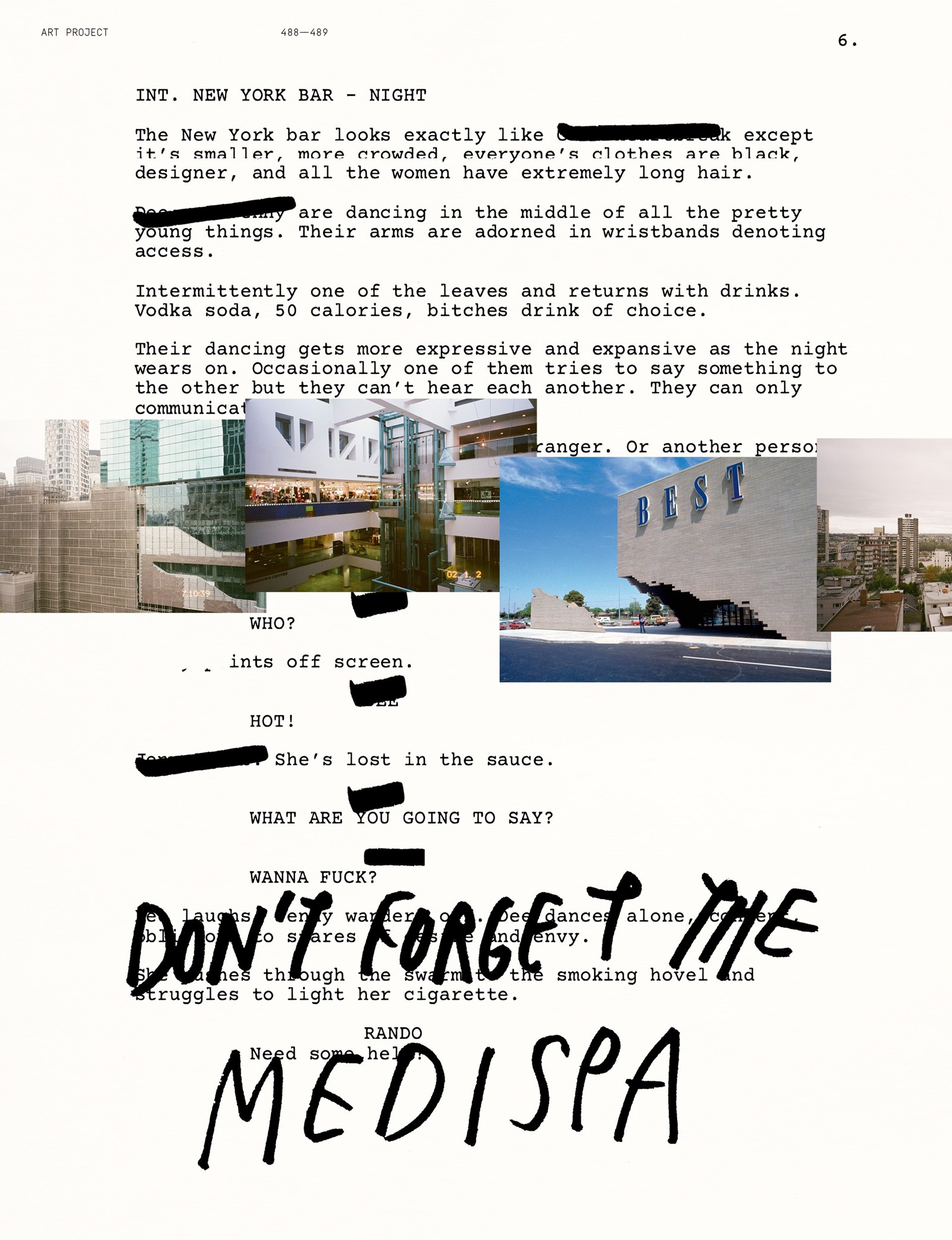
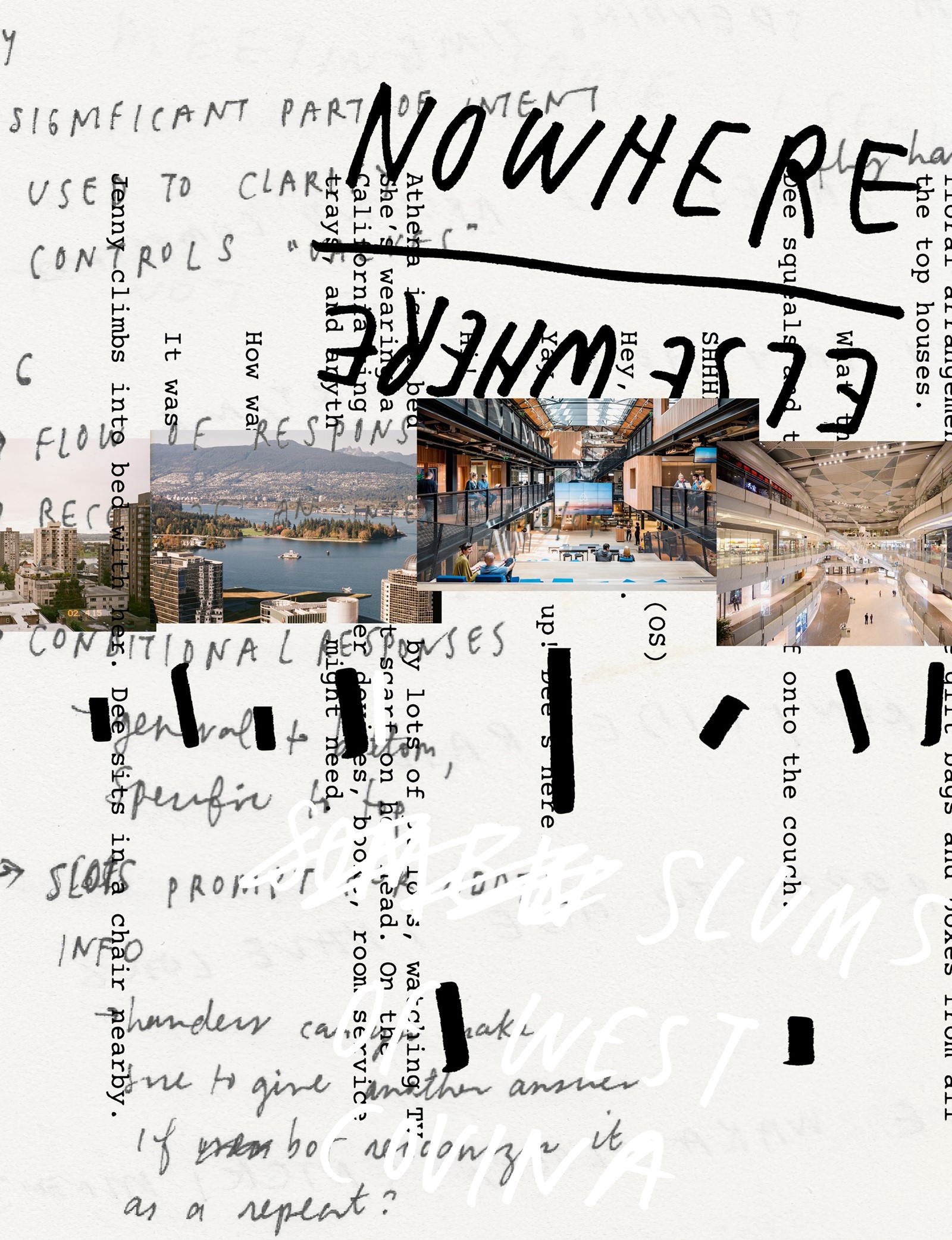
In this piece, we see Athena’s success unravelling, interspersed with SMS conversations and scenes of her watching television with two girlfriends. Here enters Kita, a digital avatar modelled from Cita’s World, a late-1990s music-video show on BET (Black Entertainment Television) – America’s largest African-American-targeting network. It was the first show to feature a black virtual-reality character as the hostess. It is through Kita that the audience can direct the story, selecting the videos Athena and her friends watch. Split across screens and time lapses in this manner, in a near-endless stream, Syms forces viewers to consume images in manifold ways – the image that Athena must live up to, those that shape the characters’ ideas of themselves, and those we ourselves select. In this hyper-metafictional refraction, Syms looks at the technologies that have transformed our ideas of closeness and connection.
For AnOther Magazine, the artist presents a series of exclusive collages, which encompass the frenzied and multifaceted layers of her research process, the result of which will form the basis of this new work.

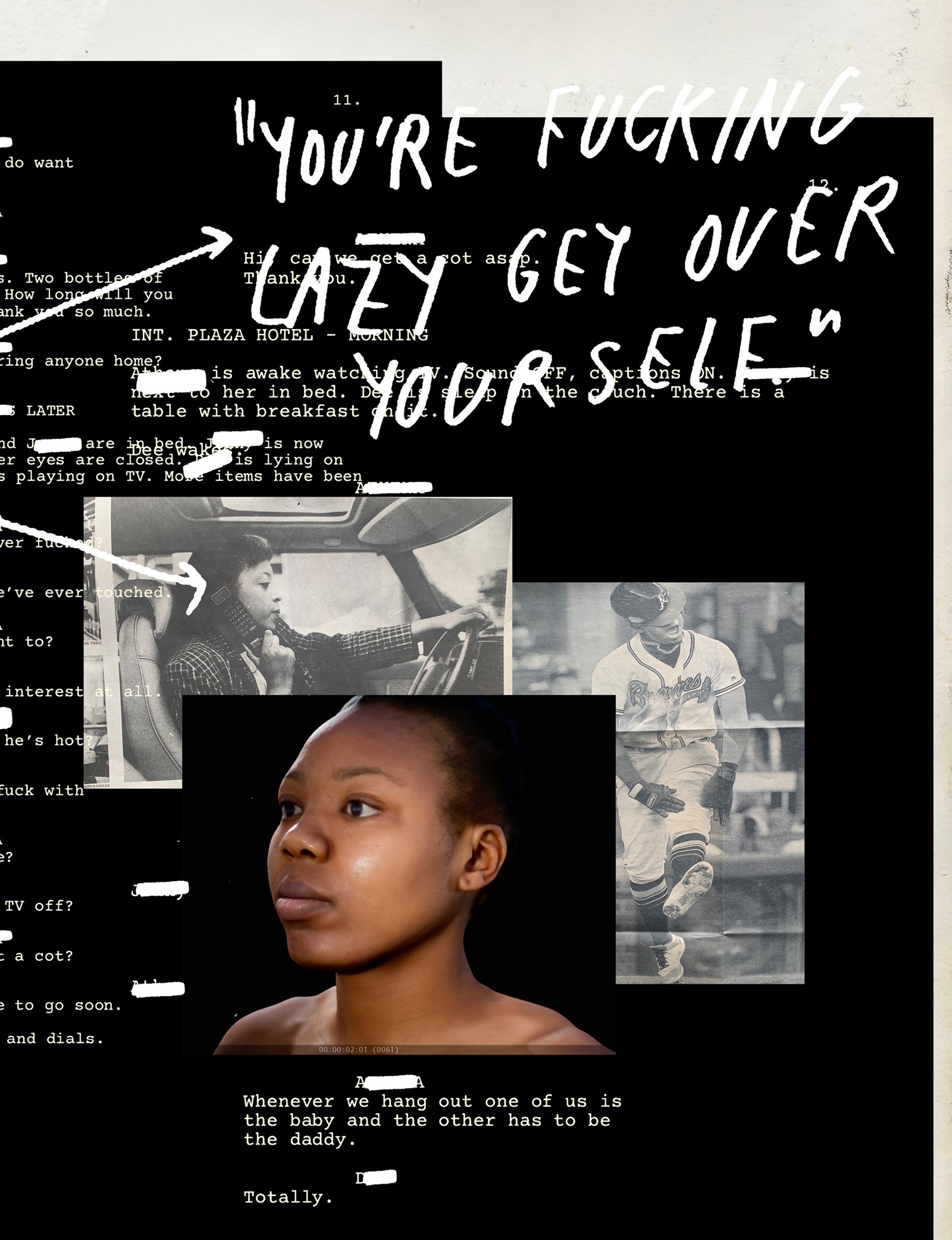
All artwork courtesy Martine Syms.
Martine Syms’ Future Fields Commission was set to be exhibited at the Fondazione Sandretto Re Rebaudengo, Turin, from April 4 until July 26, 2020, though the exhibition is now closed due to the outbreak of Covid-19. Dependent on the unfolding situation, it will move to Fondazione Sandretto Re Rebaundengo later this year, and to the Philadelphia Museum of Art in 2021.
This story originally featured in AnOther Magazine Spring/Summer 2020, which is on sale internationally now.





